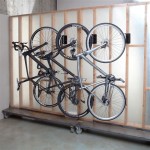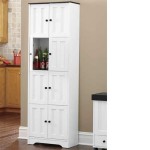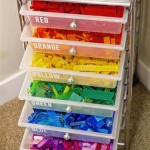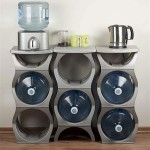7 Ideas For Outdoor Cushion Storage Boxes With Lids
Outdoor living spaces enhance the enjoyment of a home, providing areas for relaxation and entertainment. Maintaining these spaces requires careful consideration of storage solutions, especially for items like cushions that are susceptible to weather damage. Outdoor cushion storage boxes with lids offer a practical way to protect cushions from rain, sun, dirt, and pests. The following are seven ideas for selecting and utilizing outdoor cushion storage boxes with lids, designed to enhance both functionality and aesthetics.
1. Consider Material Durability and Weather Resistance
The choice of material for an outdoor cushion storage box significantly impacts its longevity and effectiveness. Several materials are commonly used, each with distinct properties:
Plastic/Resin: Plastic or resin boxes are generally lightweight, affordable, and resistant to water damage. They are available in various sizes and styles, mimicking the appearance of other materials like wood or wicker. High-density polyethylene (HDPE) is a particularly durable option, offering resistance to cracking, fading, and insect damage. However, plastic can become brittle in extreme cold and may not be aesthetically pleasing to all.
Wood: Wooden storage boxes provide a classic, natural aesthetic. Teak, cedar, and redwood are popular choices due to their inherent resistance to decay and insects. Wood boxes require regular maintenance, such as staining or sealing, to prevent water damage and warping. The porous nature of wood can also make it more susceptible to mold and mildew growth in humid climates if not properly treated.
Metal: Metal storage boxes, typically made of aluminum or steel, offer superior durability and resistance to pests. Aluminum is lightweight and rust-resistant, making it suitable for outdoor use. Steel boxes are stronger but require a powder-coated finish to prevent rust. Metal boxes can retain heat in direct sunlight, which may be a consideration for some users. The aesthetic of metal may also not appeal to all homeowners.
Wicker/Rattan: Wicker or rattan storage boxes provide a stylish and textured look. Natural wicker is best used in covered areas, as it is prone to water damage. Synthetic wicker, made from resin or plastic, is more weather-resistant and suitable for uncovered patios. Regardless of the material, wicker boxes often require a liner to protect cushions from moisture and dirt.
When evaluating material options, consider the local climate and the level of maintenance required to maintain the box's integrity. A durable, weather-resistant material will prolong the life of the storage box and protect cushions effectively.
2. Evaluate Size and Capacity Requirements
Determining the appropriate size and capacity of an outdoor cushion storage box is crucial for efficient storage and organization. Accurate measurements of the cushions to be stored are essential. Consider the largest and thickest cushions that will be housed within the box. Add additional space to allow for easy insertion and removal of cushions without excessive squeezing.
Storage boxes are typically measured in cubic feet or gallons. A small box (less than 50 gallons) may suffice for storing a few small throw pillows or cushions from a bistro set. A medium-sized box (50-100 gallons) is suitable for storing cushions from a loveseat or a couple of lounge chairs. A large box (over 100 gallons) can accommodate cushions from a sectional sofa or a larger outdoor dining set.
Consider future needs when selecting a size. It may be prudent to choose a larger box than currently required to accommodate potential additions to outdoor furniture or additional cushions. Overcrowding a storage box can damage cushions and make it difficult to close the lid properly, compromising its protective function.
In addition to cushion size, consider the available space on the patio or deck. Ensure that the chosen storage box does not obstruct pathways or create a safety hazard. Measure the intended location and compare it to the dimensions of the storage box to ensure a proper fit.
3. Assess Lid Design and Closure Mechanisms
The design of the lid and its closure mechanism are critical factors in ensuring the effectiveness of an outdoor cushion storage box. A well-designed lid should provide a tight seal to prevent water, dirt, and pests from entering the box. Several lid designs and closure mechanisms are available:
Hinged Lids: Hinged lids are the most common type, offering easy access to the contents of the storage box. Look for lids with sturdy hinges made of rust-resistant materials such as stainless steel or aluminum. Some hinged lids feature gas struts or pistons that assist in opening and closing, preventing the lid from slamming shut. These mechanisms also hold the lid open, allowing for hands-free access.
Lift-Off Lids: Lift-off lids are simple in design, completely detaching from the storage box. While they offer unrestricted access to the contents, they are less secure and may be prone to displacement by wind. Lift-off lids are best suited for storage boxes located in sheltered areas or for temporary storage needs.
Sliding Lids: Sliding lids offer a space-saving design, particularly useful in tight spaces. They slide along a track, providing access to the contents of the storage box without requiring additional clearance. However, sliding lids may be more susceptible to debris buildup in the track, requiring periodic cleaning.
Closure Mechanisms: Secure closure mechanisms are essential for keeping the lid tightly sealed. Latches, buckles, or locking systems can prevent the lid from opening accidentally, especially during strong winds. Some storage boxes feature weatherstripping or rubber seals around the lid to provide an additional barrier against moisture. Consider the ease of use and durability of the closure mechanism when making a selection.
A properly sealed lid is crucial for protecting cushions from the elements. Choose a lid design and closure mechanism that provides a secure and weather-resistant seal.
4. Explore Ventilation and Moisture Control
While providing protection from the elements, outdoor cushion storage boxes must also allow for adequate ventilation to prevent moisture buildup and the growth of mold and mildew. Trapped moisture can damage cushions, leading to unpleasant odors and potential health hazards. Several strategies can be employed to enhance ventilation and control moisture levels:
Ventilation Holes: Many storage boxes feature ventilation holes or slots that allow air to circulate within the box. These openings should be strategically placed to promote airflow without compromising the box's weather resistance. Consider the size and location of the ventilation holes to ensure they do not allow rain or pests to enter.
Moisture-Absorbing Materials: Silica gel packets or other moisture-absorbing materials can be placed inside the storage box to help control humidity levels. These materials absorb excess moisture, preventing it from condensing on the cushions. Replace or recharge these materials periodically to maintain their effectiveness.
Liners: Using a breathable liner inside the storage box can provide an additional layer of protection for cushions. Liners made of moisture-wicking fabrics, such as polypropylene, can help draw moisture away from the cushions and promote evaporation. Ensure the liner is properly sized to fit the storage box and does not obstruct ventilation.
Storage Practices: Properly drying cushions before storing them is crucial for preventing moisture buildup. Allow cushions to air dry completely after rain or washing. Avoid storing damp or wet cushions in the storage box, as this can create a breeding ground for mold and mildew. Periodically inspect the cushions and the storage box for signs of moisture or mold growth.
Implementing effective ventilation and moisture control measures is essential for maintaining the condition of cushions and preventing damage from moisture-related issues.
5. Integrate Aesthetic Considerations
Outdoor cushion storage boxes should not only be functional but also aesthetically pleasing, complementing the overall design of the outdoor living space. Consider the color, style, and texture of the storage box to ensure it blends seamlessly with the surrounding furniture and decor.
Color Coordination: Choose a storage box color that complements the color palette of the patio or deck. Neutral colors, such as beige, gray, or brown, are versatile and can easily blend with various styles. Alternatively, select a color that matches or complements the color of the outdoor furniture cushions or other accessories. Avoid choosing colors that clash or stand out excessively, as this can disrupt the visual harmony of the space.
Style Compatibility: Consider the overall style of the outdoor living space when selecting a storage box. Traditional spaces may benefit from wooden storage boxes with classic designs, while modern spaces may be better suited for sleek metal or resin boxes. Wicker or rattan boxes can add a touch of texture and natural appeal to any style. Choose a storage box that aligns with the overall design theme to create a cohesive and visually appealing look.
Texture and Finish: The texture and finish of the storage box can also contribute to its aesthetic appeal. Smooth, glossy finishes are typically associated with modern styles, while textured or distressed finishes can add character and charm to traditional or rustic spaces. Consider the texture and finish of the surrounding furniture and accessories to ensure a harmonious blend.
Integration with Landscaping: Position the storage box strategically within the outdoor space, considering its proximity to plants, trees, and other landscaping elements. A well-placed storage box can serve as a functional and decorative element, enhancing the overall beauty of the outdoor environment.
By carefully considering aesthetic factors, outdoor cushion storage boxes can become integrated elements of the outdoor decor, enhancing the beauty and functionality of the space.
6. Prioritize Security and Safety
Ensuring the security and safety of an outdoor cushion storage box is paramount, especially in areas with high winds, potential for theft, or the presence of children. Implementing appropriate safety features and security measures can prevent accidents and protect the contents of the storage box.
Lid Support Mechanisms: Storage boxes with hinged lids should feature lid support mechanisms, such as gas struts or pistons, to prevent the lid from slamming shut unexpectedly. These mechanisms hold the lid open, reducing the risk of injury to hands or fingers. Ensure the lid support mechanism is properly installed and functioning correctly.
Locking Mechanisms: Consider storage boxes with locking mechanisms to deter theft and prevent unauthorized access. Padlocks, combination locks, or built-in locking systems can provide added security, especially for valuable cushions or other items stored within the box. Ensure the locking mechanism is durable and resistant to tampering.
Weight and Stability: Choose a storage box that is sufficiently heavy or stable to prevent it from being blown over by strong winds. Heavier materials, such as wood or metal, are generally more stable than lightweight plastic. If using a lightweight storage box, consider adding weight to the bottom of the box to increase its stability. Secure the storage box to the ground or a nearby structure if necessary.
Child Safety: If children have access to the outdoor living space, take extra precautions to ensure the safety of the storage box. Choose a storage box with smooth edges and rounded corners to prevent accidental injuries. Avoid storage boxes with small parts that could be swallowed. Educate children about the safe use of the storage box and supervise their interactions with it.
Prioritizing security and safety measures is essential for preventing accidents and protecting the contents of an outdoor cushion storage box, ensuring a safe and enjoyable outdoor living environment.
7. Consider Portability and Storage
While the primary function of an outdoor cushion storage box is to provide a stationary storage solution, considering its portability can be beneficial for certain situations. Additionally, evaluating the storage requirements of the box itself during the off-season or when not in use can optimize space utilization.
Wheels or Casters: Storage boxes equipped with wheels or casters offer enhanced portability, allowing them to be easily moved around the patio or deck. This feature is particularly useful for rearranging furniture configurations or for moving the storage box to a more sheltered location during inclement weather. Ensure the wheels or casters are durable and capable of supporting the weight of the storage box and its contents.
Lightweight Materials: Choosing a storage box made of lightweight materials, such as plastic or aluminum, can make it easier to move and transport. This is especially important for individuals who may have difficulty lifting or maneuvering heavy objects. Consider the weight of the storage box when empty and when filled with cushions.
Disassembly and Storage: Some storage boxes can be disassembled for compact storage during the off-season or when not in use. This feature is particularly valuable for those with limited storage space. Look for storage boxes that are easy to disassemble and reassemble without requiring specialized tools. Store disassembled storage boxes in a dry, protected area to prevent damage.
Stackability: If multiple storage boxes are used, consider models that are designed to be stacked on top of each other. This can save space and optimize storage efficiency. Ensure the storage boxes are securely stacked and that the weight is evenly distributed to prevent tipping or collapse.
Evaluating the portability and storage requirements of outdoor cushion storage boxes can enhance their versatility and convenience, making them a more practical and user-friendly storage solution.

Diy Outdoor Patio Storage Deck Box

Garden Cushion Storage Ideas Best Outdoor For Cushions

Diy Outdoor Patio Storage Deck Box

Deck Boxes The Home Depot

The 7 Best Storage Containers Of 2025 Reviews By Wirecutter

Diy Outdoor Patio Storage Deck Box

The 7 Best Storage Containers Of 2025 Reviews By Wirecutter
.png?strip=all)
How To Protect Your Furniture From The Elements Lifestylegarden

Deck Boxes The Home Depot
Lifetime Outdoor Storage Deck Box 150 Gallon Costco
Related Posts








